I’m willing to wager that most of you have never heard of Mount Roraima.
But you probably have watched the Disney-Pixar animation feature film, Up, which features the 78-year-old character, Carl, fulfilling his dream of visiting the fictitious Paradise Falls. He does so none other than by turning his house into a makeshift airship using thousands of helium balloons!
The setting of Up’s Paradise Falls, on the edge of a majestic and cloud-enshrouded table-top mountain, is actually inspired by similarly-shaped mountains in Venezuela called tepuis. One of these tepuis, Auyán-tepui, is the source of the world’s tallest waterfall, Angel Falls—quite possibly the inspiration behind Paradise Falls.
That said, the most accessible tepui to climb is Mount Roraima, which is located at the triple border point between Venezuela, Brazil and Guyana. The only non-technical route to reach the top of Mount Roraima begins from the village of Paraitepui in Venezuela.
Guides are required to climb Mount Roraima and most guided treks begin from the town of Santa Elena de Uairén. The typical trekking package offered by the travel agencies in Santa Elena will take six days, with the fourth day spent entirely on the top of Mount Roraima.
I did my trek to Mount Roraima with the local travel agency Kamadac and I arranged everything via email with them before entering Venezuela. They are not the cheapest travel agency in Santa Elena, but their service and equipment were great.
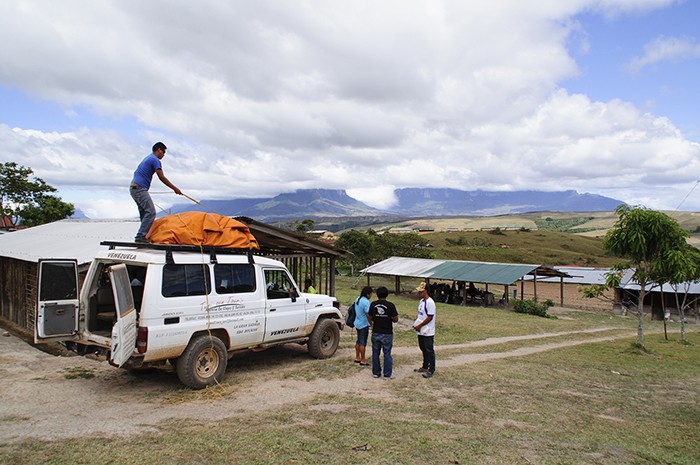
My first day began with a ride from Santa Elena to Paraitepui. From the village, both Mount Roraima (the right one in the photo above) and its neighbouring tepui, Kukenán-tepui, can be easily spotted.
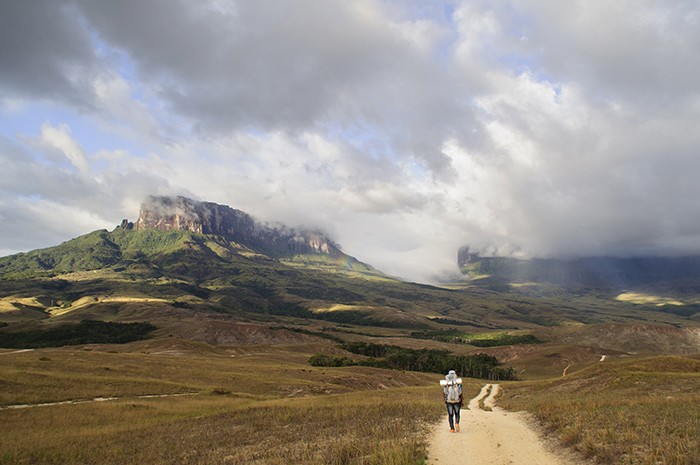
Condensing tropical moisture that rises from the foot of these tepuis mean that they are often shrouded in clouds. Nevertheless, these constantly moving clouds that selectively obscure and reveal the tepuis only serve to make the landscape a lot more dramatic.
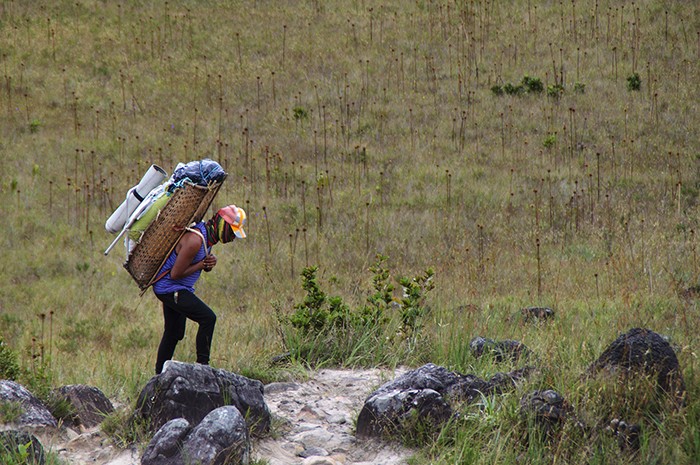
Most guided treks include the services of porters, who will carry the group’s tents, food, as well as a portable toilet. Due to the delicate ecosystem on the tepuis, park regulations forbid trekkers from leaving behind their own excrement. All the excrement collected in the portable toilet will be carried back to Paraitepui for disposal.
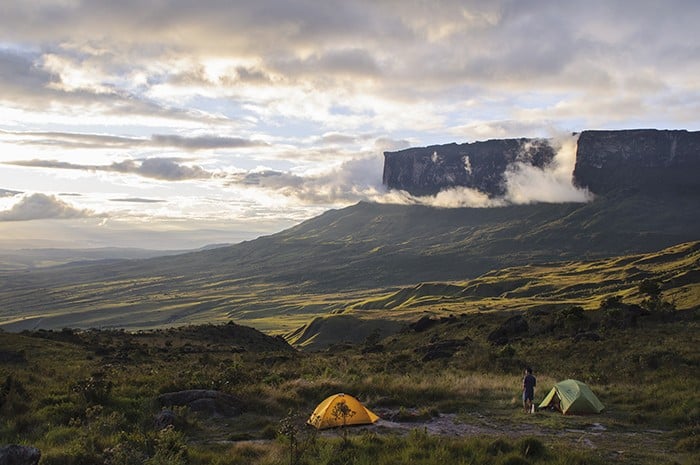
From the base camp of Mount Roraima, one can start to get a better view of the surrounding area, generally called the Gran Sabana (Great Savannah). The scenery is magical, especially at sunrise or sunset.
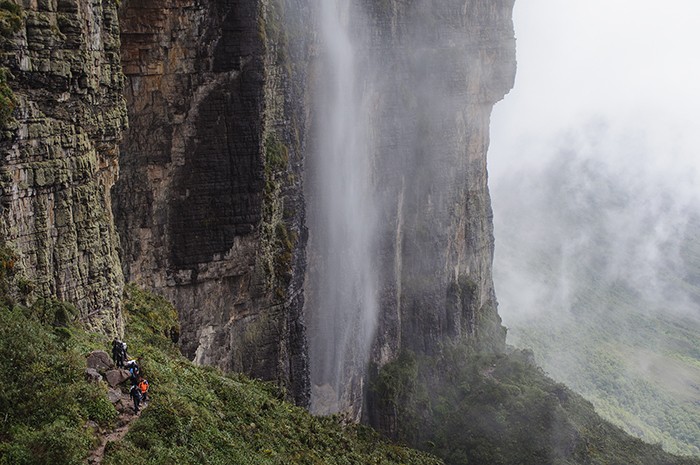
The ascent to the top of Mount Roraima will require all trekkers to pass directly underneath a towering waterfall. That said, due to the height of the waterfall, most of the water flowing down will have been dissipated by wind. Walking underneath the waterfall will therefore feel more like a shower than a gushing torrent of water.
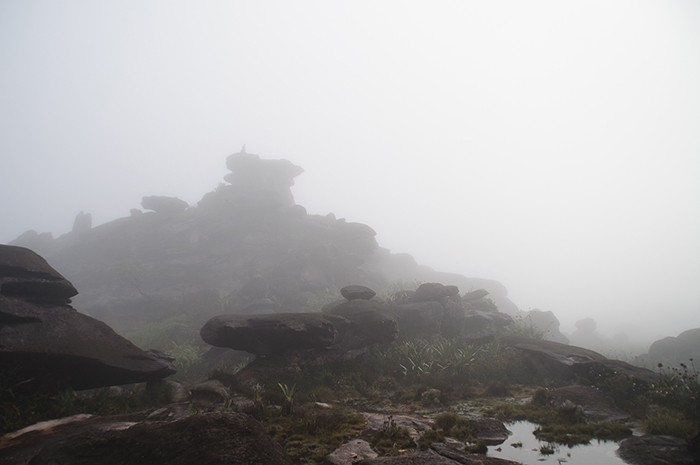
Our guide and porters repeatedly warned us that the weather conditions at the top of the tepuis can change very rapidly. Clouds can roll in within minutes, easily disorienting anyone who is unfamiliar with the rocky and cavernous terrain.
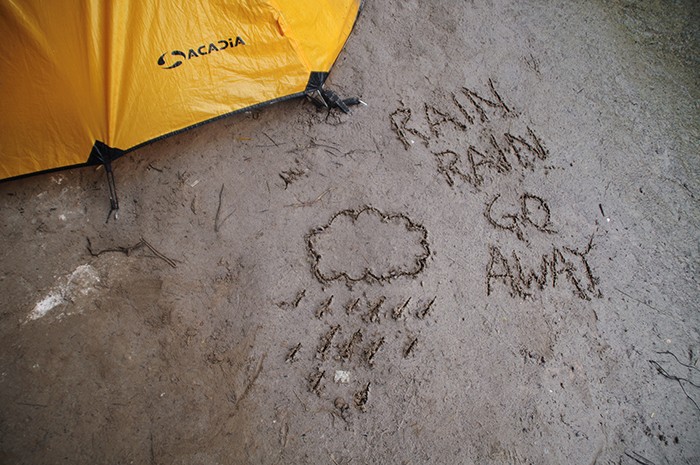
Unfortunately, most of our group’s time spent on top of Mount Roraima was spent hiding in a cavern away from the wind and rain. It was a good reminder that we are always at the mercy of Mother Nature.
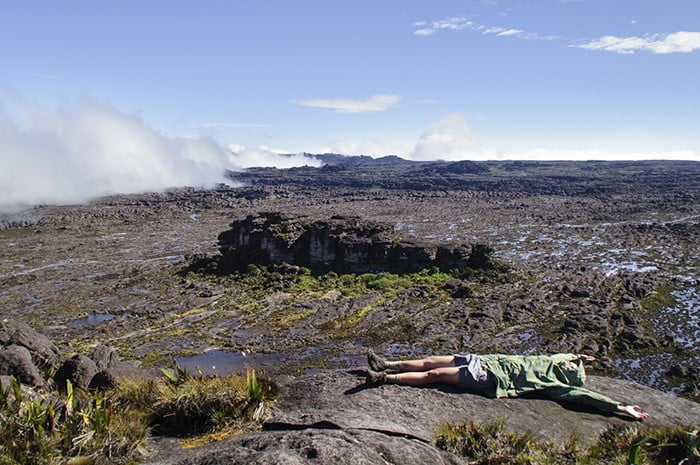
Fortunately, we managed to go to the highest point on Mount Roraima when the rain stopped and clouds cleared. From that vantage point, we can easily take in the sheer scale of the mountain and the unique geological formations on its top. Most of us went crazy with our cameras here.
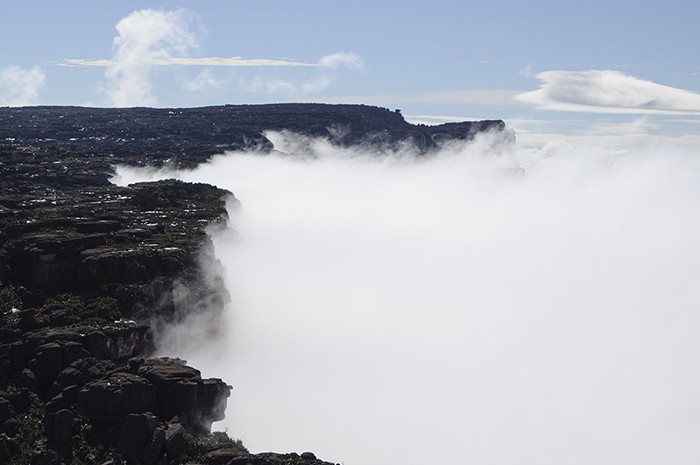
The edges of Mount Roraima may provide another dramatic shot for your camera. In the above photo, its unnervingly steep cliffs are masked by an unyielding sea of cottony white clouds.
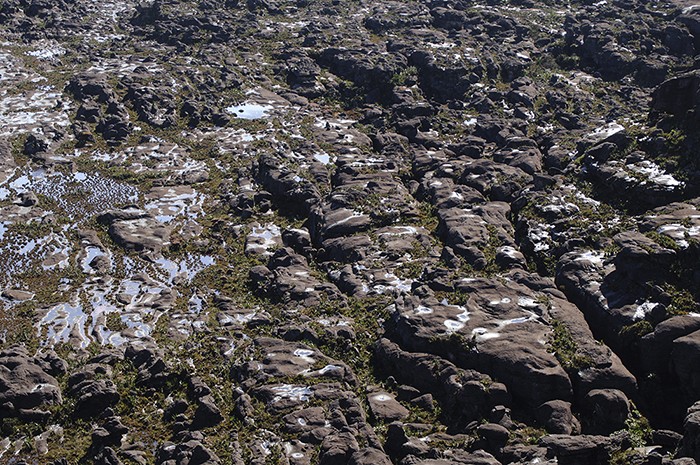
From afar, although the top of Mount Roraima may seem flat, it is far from that. The landscape at the top resembles more of a labyrinth, with many rocky gorges. Getting from place to place was certainly no walk in the park!
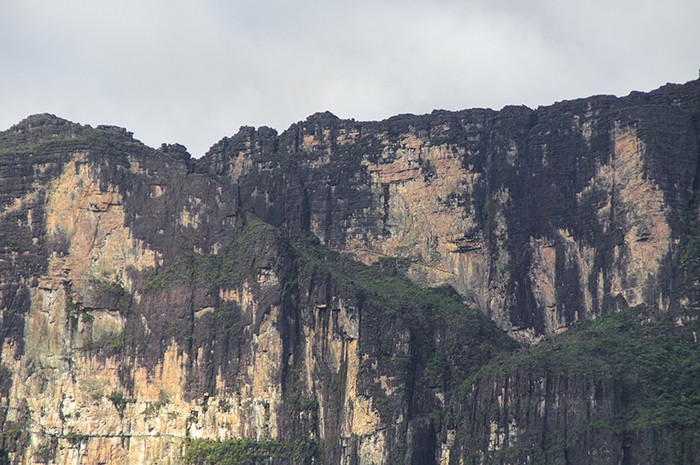
A natural ramp that cuts diagonally across the cliff face allowed us to ascend and descend from Mount Roraima without the use of any specialised equipment. This is the same ramp that the English botanist Sir Everard im Thurn took to reach the top in 1884—the first recorded summit of the mountain.
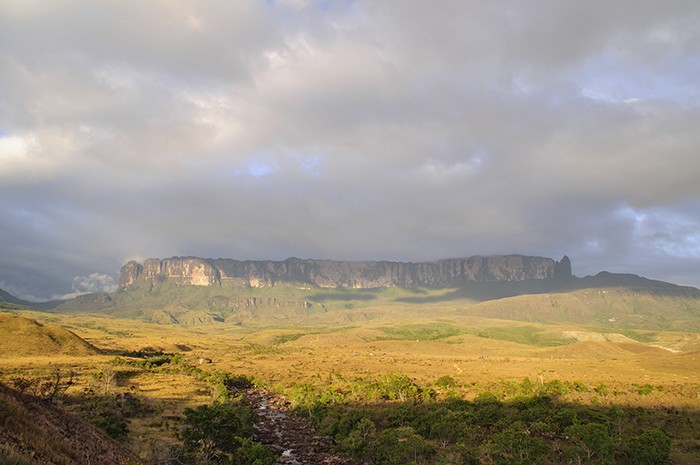
Bathed in a delicious golden hue, one can only bask at the entirety of Mount Roraima at sunset. This photo was taken in the same day that we descended the mountain, showing the distance that we covered—largely downhill—in a single day.
All in all, the distinctive natural beauty of the Venezuelan tepuis makes the journey to their remote location totally worth it. The ascent to the top was Mount Roraima felt just like a sojourn to a different world.
Unfortunately, the grandeur of Venezuela’s natural landscape is often overshadowed by news of its economic and political woes. Nevertheless, if you have an appetite for adventure and a dose of risk, Venezuela can still be a viable and spectacularly beautiful travel destination!




